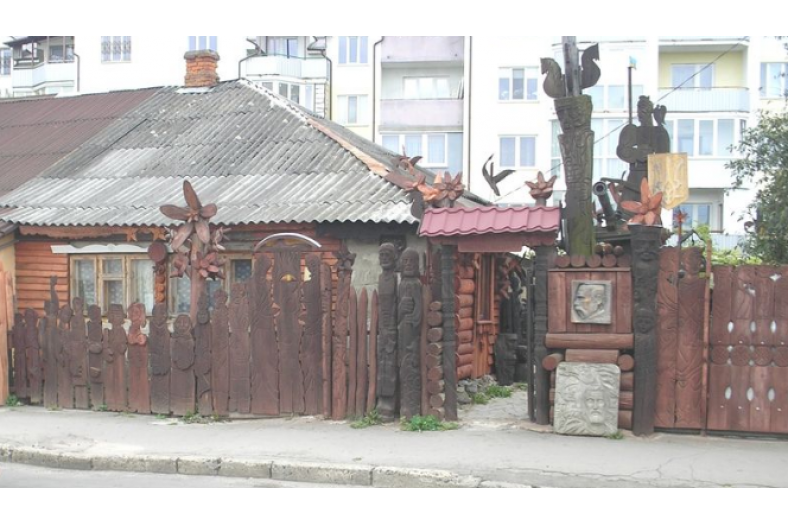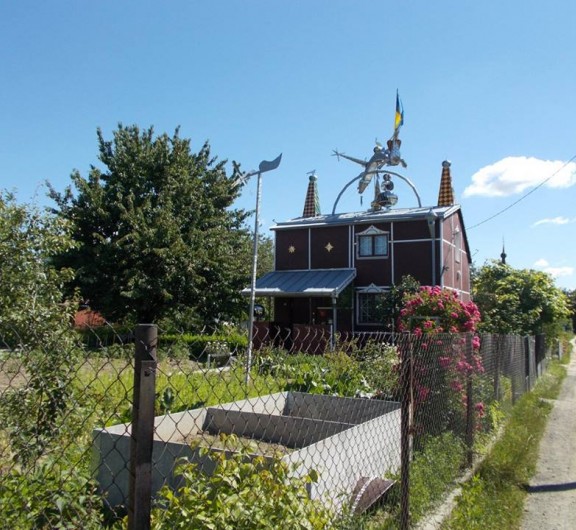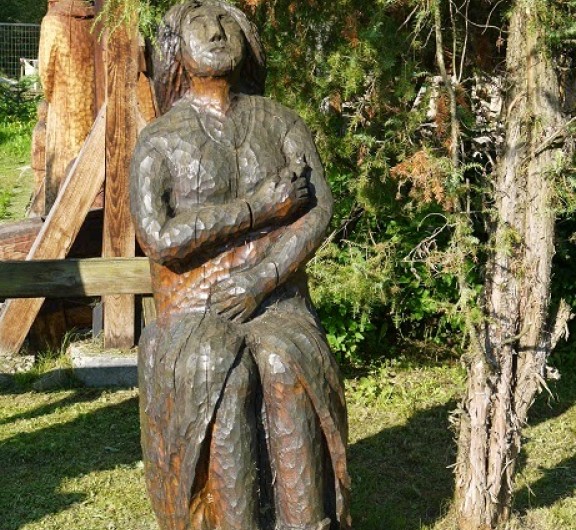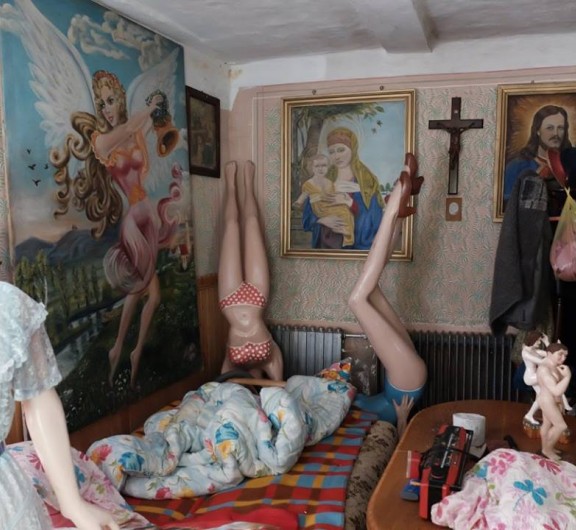Sculpture GardenOleg Dubinchuk (b. 1956)
Extant
Volodymyr-Volynsky, Volyns'ka oblast, Ukraine
When the artist is on site at the premises he is happy to welcome visitors, the site is located on Dragomanov Street, Sviichiv, Volodymyr-Volynskyi Rayon, Ukraine
About the Artist/Site
Born in Sviichiv, a small community of some 300 inhabitants some 15.5 miles (25 km) east of the large town of Volodymyr-Volinskyi in the western Ukraine, at a young age Oleg Dubinchuk was already showing artistic talent. His mother, who was herself renowned for her embroidery, encouraged him to go to art school, so at age fourteen he began studying at the vocational school for the arts No. 14 in Ivano-Frankove, a small town in the Lviv region, some 112 miles (180 km) south of Sviichiv and Volodymyr-Volinskyi. He received training in carving wood and metal between 1970 and 1974, after which he was conscripted into military service. He served three years (1974-1977) with the Northern Navy of the former Soviet Union.
Finally, in his early twenties, Dubinchuk was able to begin his career as a sculptor. He first joined a studio in Volodymyr-Volynskyi and then later worked in a comparable studio in Novovolynsk, a town some 18 km southwest of Volodymyr-Volynskyi. His job was to create sculptures and sculptural decorations for official monuments, government buildings, and institutions related to the state, such as schools and libraries. His work included both freestanding sculptures and sculpted reliefs; among them was an 8 x 3 meter sculpted relief for a public school that depicted the four seasons. Given the sphere of influence of the studios with which he worked, Dubinchuk’s artwork was primarily installed in the western Ukraine.
After fourteen years at the Novovolynsk studio, he was terminated when it closed after the dissolution of the USSR in the early 1990s. He subsequently returned to Volodymyr-Volynskyi.
It is not quite clear when Dubinchuk began transforming the garden at his parental house in Sviichiv into an art environment; he himself has said that he does not remember the precise time. However, it is clear that he has been actively embellishing the site for a few decades, and it is quite possible that Dubinchuk was already working on the site, adding sculpture and reliefs, while he simultaneously held down his jobs at the studios. Now that his parents have passed away and Dubinchuk continues to live in the parental home, he has even more freedom than before to work.
The site is separated from the street by a long fence that consists of narrow, oblong wooden shields – sometimes reaching human scale – that have been carved into male and female characters. Behind the fence are a barn (now used as a workshop), the home, and a large garden, which looks more like a grassy field. All of the walls are covered with wooden or metal carved reliefs and on the grassy area a large variety of wooden sculptures is on display. Most of these are life-sized, but there are also a number of smaller works. A large number of the sculptures have been coated with a black surface covering, lending them an imposing appearance.
Just behind the entrance into the site a large wooden totem arises, flanked by a helmeted warrior with a spear. The wall of the house is decorated with circular low reliefs that depict famous personalities of world culture.
The many wooden sculptures depict scenes from daily life, such as people returning from the market, hunters, and farmers; there are also sculptures of all kind of animals and birds, including turtles, sparrows, and nightingales, but especially cranes, birds that arouse feelings in Dubinchuk that he connects in a loving way with his wife. In addition, there are scenes related to fairy tales and those that depict historical or famous characters. Among this latter grouping is a row tightly lined with Cossacks, as well as the three brothers Kyi, Shchek, and Horyv, along with their sister Lybid, founders of the city of Kiev.
When Oleg Dubinchuk celebrated his 60th birthday in July 2016, he was honored with an exhibition in the city of Volodymyr-Volynskyi. This event triggered some publicity in the regional media, including special attention paid to Dubinchuk’s transformation of the garden around his house in Sviichiv into a sculpture garden. Although the site had been known by locals and others in the region, this was probably the first time that a wider range of people, both in the Ukraine and abroad, learned about this art environment. In Ukraine art environments constitute a phenomenon on which little has been written, and they have not yet become a subject of systematic research. Currently only a few sites are known.
When the artist is on site at the premises he is happy to welcome visitors.
~Henk van Es
Map & Site Information
Volodymyr-Volynsky, Volyns'ka oblast
ua
Latitude/Longitude: 50.8481952 / 24.3256569
Nearby Environments








Post your comment
Comments
No one has commented on this page yet.